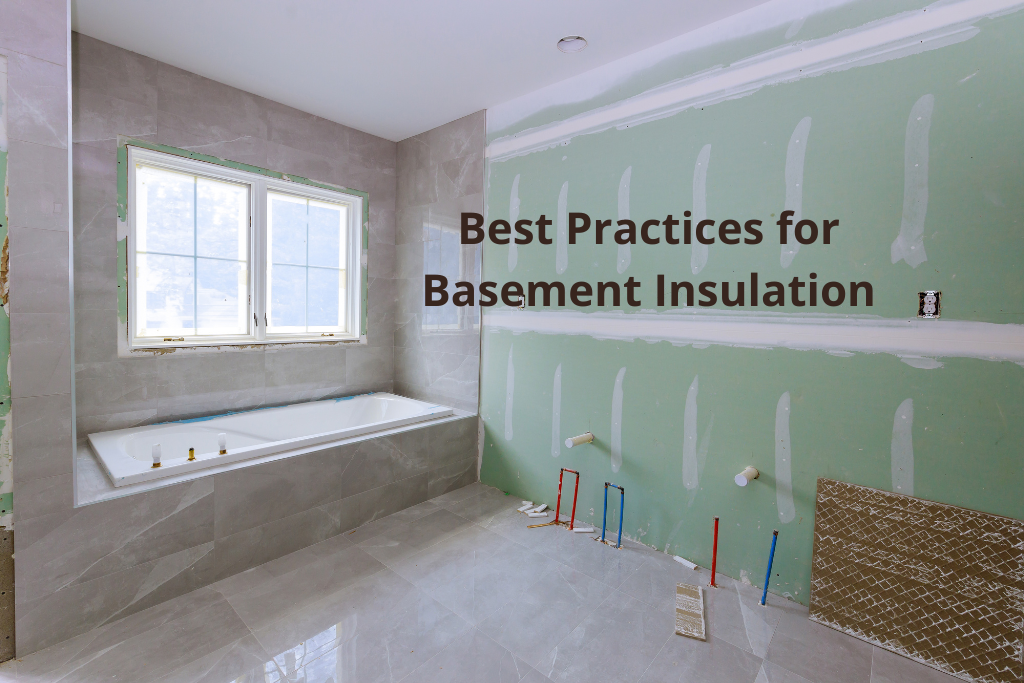Home insulation is essential for reducing energy costs and enhancing comfort, and while attics and walls often get the most attention, basement insulation should not be overlooked. Properly insulating your basement can significantly improve energy efficiency, create a more comfortable living space, and protect your home from moisture-related issues. This guide covers the importance of basement insulation, its benefits, and the best practices for effective installation.
1. Why You Should Insulate Your Basement
Basements are known for being cold and damp, making them less energy-efficient and uncomfortable if not properly insulated. Here are the key benefits of insulating your basement:
Reduces Heat Loss
Basements account for a significant portion of a home’s heat loss. Since basements are typically below ground level, they are more exposed to cold temperatures from the surrounding soil. Without proper insulation, heat can escape through the basement walls, forcing your heating system to work harder. Insulating your basement helps retain warmth, reducing energy consumption and heating costs during the colder months.
Improves Home Comfort
Uninsulated basements are often cold and unwelcoming. Insulating the basement creates a warmer, more comfortable space, whether it's used for storage, a workshop, or a finished living area. Basement insulation also helps prevent drafts and reduces temperature fluctuations, improving the overall comfort of your home.
Prevents Moisture and Mold
Basements are naturally prone to moisture, which can lead to mold growth and structural damage if not properly managed. Moisture can seep through foundation walls or enter via cracks, creating a damp environment. Insulating your basement helps to create a barrier against moisture and reduces the risk of mold and mildew, promoting a healthier home environment.
Increases Energy Efficiency
Proper basement insulation increases your home’s energy efficiency by preventing heat loss and keeping cold air from seeping into your living spaces. With a well-insulated basement, your heating and cooling systems won’t have to work as hard, resulting in lower energy bills. According to the Environmental Protection Agency (EPA), basement insulation can contribute to a 10-20% reduction in energy usage.
2. Best Practices for Basement Insulation
To maximize the benefits of basement insulation, it’s essential to follow best practices. The right insulation materials and installation techniques will ensure long-term performance and protection against moisture and energy loss.
Select the Appropriate Insulation Material
Choosing the right insulation material is crucial for ensuring the effectiveness of your basement insulation. Since basements are prone to moisture, it’s important to choose materials that are moisture-resistant and provide good thermal protection. Common insulation materials for basements include:
- Foam Board (Rigid Foam Insulation): This is a durable option that provides excellent insulation and moisture resistance. Foam board insulation can be installed directly on basement walls and offers a high R-value, making it effective in preventing heat loss.
- Spray Foam Insulation: This material expands to fill gaps, providing a seamless barrier that prevents air leaks and moisture infiltration. Spray foam is ideal for insulating areas with uneven surfaces and can be used to insulate the rim joists as well.
- Mineral Wool Insulation: Made from natural or recycled materials, mineral wool is a fire-resistant and moisture-resistant insulation option that provides good thermal performance. It is often used for insulating basements with high humidity.
Ensure Proper Air Sealing
Before adding insulation, it’s essential to seal any air leaks in the basement. Gaps around windows, doors, and cracks in the foundation can allow cold air and moisture to enter, reducing the effectiveness of insulation. Use caulk or weatherstripping to seal air leaks and ensure a tight seal around windows and vents.
Install Vapor Barriers
Moisture is a common issue in basements, so it’s essential to install a vapor barrier to prevent condensation from forming on insulation materials. A vapor barrier prevents moisture from the foundation walls from entering the insulation, which can cause mold growth. Vapor barriers should be installed on the warm side of the insulation (facing the interior of the home).
Insulate Rim Joists
The rim joists, located at the top of the basement walls, are common sources of air leakage and heat loss. Spray foam or foam board insulation can be used to insulate rim joists and prevent drafts. This area is often overlooked but is critical for improving overall basement insulation.
Consider Floor Insulation
In addition to insulating the walls, you may want to insulate the basement floor to reduce heat loss from below. Foam board insulation or an insulated subfloor can help keep your basement floor warmer, making it more comfortable to walk on, especially in colder months.
3. Maintaining Your Basement Insulation
After installing basement insulation, regular maintenance is essential to ensure its effectiveness over time. Here’s how you can keep your insulation in top condition:
- Check for Moisture: Regularly inspect your basement for signs of moisture, such as dampness or mold growth. Address any issues promptly to protect your insulation and prevent further damage.
- Inspect Vapor Barriers: Ensure that vapor barriers remain intact and are properly sealed. Damaged vapor barriers should be repaired to prevent moisture infiltration.
- Seal Any New Gaps: Over time, new cracks or gaps may develop. Inspect your basement periodically and seal any new air leaks to maintain energy efficiency.
4. Conclusion
Basement insulation is a critical component of a well-insulated home. By improving energy efficiency, preventing moisture issues, and creating a more comfortable space, insulating your basement provides long-term benefits for your home. Be sure to choose the right materials, follow best practices, and maintain your insulation to ensure it remains effective for years to come. Proper insulation is an investment that pays off in both comfort and energy savings.





Comments